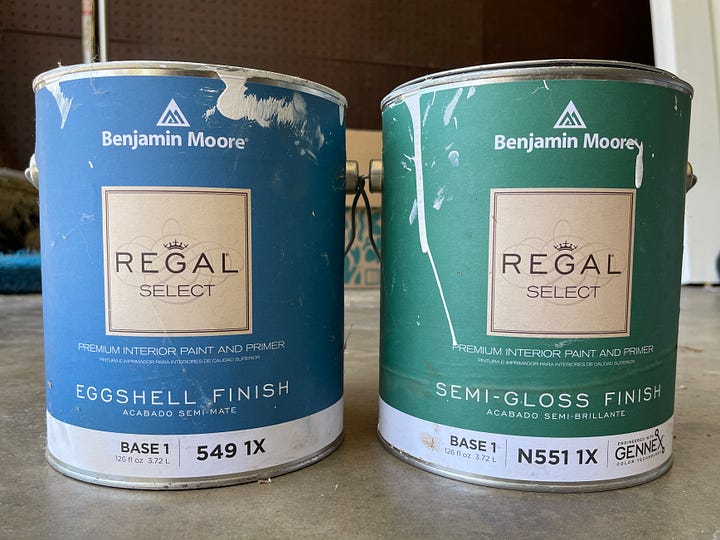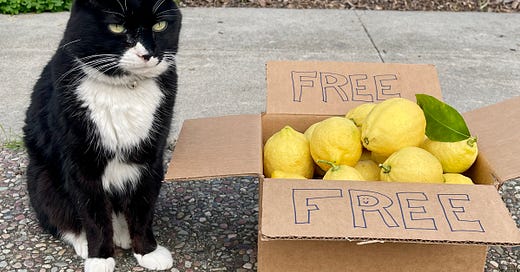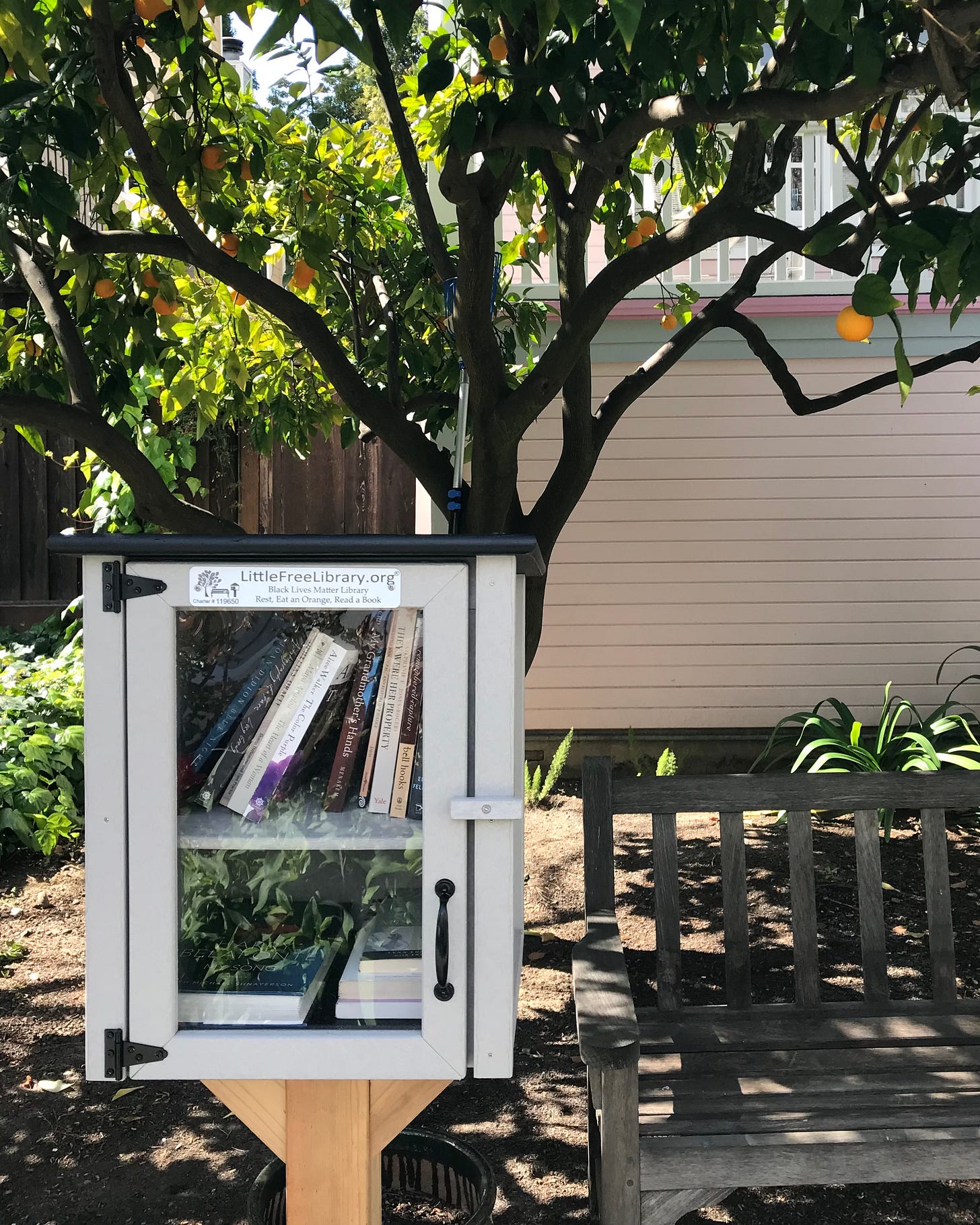In a gift economy, people share freely without expecting anything in return. For example, imagine I give some lemons to my neighbor. We chat, likely outside, the thriving plants in our yards serving as a backdrop, perhaps her sweet golden retriever runs over and I pet her a bunch, lowering my blood pressure (which I feel must have soared over the last five or six weeks). A couple of days later, my neighbor brings me some lilies from her yard in a vase. When I return the empty clean vase, I tell her to help herself to free mulch that ChipDrop dropped into my driveway the day before. And so on.
A economic system that extracts more from Earth than the planet can replenish (i.e., unbridled capitalism) cannot continue indefinitely (see: laws of physics). A gift economy can.
“All flourishing is mutual” — Robin Wall Kimmerer, The Serviceberry
I recently read Robin Wall Kimmerer’s inspiring new book The Serviceberry, a short follow-up to her masterpiece Braiding Sweetgrass. In it, Kimmerer imagines what a gift economy would look like, or rather, what it looks like because it already exists—at least to a degree—in many communities, including mine and probably yours. Within Indigenous communities like Kimmerer’s, the philosophy and practice of a system based on reciprocity and gratitude has been the norm.
What if we shared the abundance the Earth provides rather than competing for scarce resources, which are not in fact scarce but privatized and hoarded. Kimmerer writes that while market capitalism won’t go away anytime soon, we can nurture the gift economy alongside it.
An anti-consumer gift list
These are just some examples of gifts to share.
Garden produce
Everyone loves homegrown produce. The box of lemons I put outside last week disappeared quickly. (Fortunately, Bootsy did not.) I can’t possibly use all the lemons our prolific tree produces. Last year, an invasive fruit fly infestation in the area prevented us from giving fruit away. Luckily, that quarantine ended in 2024.
Garden shares
The community garden near me hosts monthly garden shares. People give away all kinds of items: plants, seeds, produce, plant pots, and sometimes books or canned food. I’ve scored succulent plants, a peach tree sapling (which started to bear fruit last year) and lots of seeds. You will be welcome at these even if you have nothing to share.
Yard sharing
In his book Food Freedom, Robin Greenfield writes about growing or foraging every morsel of food he ate for an entire year. As part of the gift economy, Robin has made his book free to anyone who wants to read it. (Go here for more book info.)
When Robin started his quest, he didn’t have any land to work on. So he asked a neighbor if he could grow food in their yard. In return, the neighbor received fresh produce from the food forest that came to thrive in what had formerly been an unproductive lawn.
Or perhaps you prefer bright, fragrant flowers. You may be able to share your yard with a local, small flower grower. The grower benefits from the lease-free land in which to grow their plants and their business. You enjoy beautiful gardens without doing any of the work.
Pollinator gardens
For the past three years, I’ve been focused on converting our front yard and sections of the back to native plants: Coast Live Oaks and Ceanothus and Milkweed and California Poppies (so many poppies!). These plants support the insects and birds that support the food web that supports all of us.
Buy Nothing groups
I love my very active Buy Nothing group. I’m amazed at what people take. I’ve given away tiles and half-full cans of paint and clothes and knickknacks. I’ve also picked up plants and fabric and food. Buy Nothing keeps money in your wallet and unwanted stuff out of landfill.


Clothing or random stuff swaps
My friends and I have had a couple of super fun swaps. People bring the best stuff—small appliances and kitchen tools and books and jewelry and more. Read about one of our swaps here.
My friend Monique helped organize a one-day secondhand store at the elementary school where she teaches. Every school needs to do this! Read about the initiative here and learn how to start a similar swap in your child’s school.
Repair cafés
At a repair café, volunteers fix broken your stuff—electronics and clothing and furniture and even bikes. You sit with the volunteer fixer, you explain the problem, you learn a bit about the repair process and you have a social interaction. These are so much fun. And having a broken item fixed brings real joy whereas ordering a replacement online does not. Visit the Repair Café website to find a repair café near you or to learn how to start one.
Little Free Libraries
We live fairly close to the library on a very quiet street so I’m not sure how much traffic we would get if we built a Little Free Library but I would love to build one and stock it with banned books and cookbooks and, if they are a thing, banned cookbooks! Go here to find a Little Free Library near you or to find out how to build one.
Mug libraries
Billions of throwaway cups, which are lined with plastic, clog waste streams worldwide. Cup lending libraries in cafés provide one solution. Customers drop off their excess mugs, other customers borrow them for their drinks and return them later. Read about how a café in Sydney, Australia manages its mug library.
Creative reuse centers
These centers divert materials from landfill such as paint, paper, knitting supplies, fabric, books, containers, electronics, sewing notions, tiles, scrap wood and so on. FabMo (Fabric and More) near me focuses on fabric. SCRAP operates in San Francisco. East Bay Depot Creative Reuse is in Oakland. An online search near you may turn up similar organizations. The materials are not free but deeply discounted.
Produce bag sewing bees
My friends and I sew produce bags out of donated fabric and hand them out at the farmers’ market to help reduce plastic waste and start conversations about plastic pollution. Read about my sewing group in The Guardian. Or go here to learn how to start a group of your own.
Intentional community
Co-housing, student co-ops, communes, multi-generational housing—these forms of intentional communities can help alleviate not only the housing and cost of living crises but also the crisis of loneliness. From 2005 to 2020, I lived in an intentional community and I loved it. We residents shared all kinds of resources. Read about that here.
Education
Do you have skills or knowledge to share? Teaching people in your neighborhood (or online) builds both community and resilience. Many people out there could use help with financial literacy, resume writing, basic life skills like cooking or gardening and, as the last several weeks have made evident, world history.
March events in Northern California
March 8th, 2pm–3:30pm: Redwood City Library, produce bag sewing workshop. A small number of machines and fabric will be provided (or bring your own). Register here for this free in-person event.
March 29th, 2pm–3:30pm: Redwood City Library, fermentation demo. Go here for more information.








Outstanding, Anne Marie. Why, lots of people could signficantly reduce their expenses while significantly increasing their feelings of community. Another thing people can do is make and share a list of 'sharing' resources within their own communities. One that I did is available HERE: https://www.wehatetowaste.com/share-swap-borrow-zerowaste-nyc/
Love this.
In Aarhus, Denmark, loads of coffee shops have reusable to-go cups and machines in the street where you can return them.
You pay a little extra for the cup but get the money back if you use the machine.
https://www.reuseable.dk/blog/aarhus-residents-have-returned-750-000-reusable-cups-in-one-year